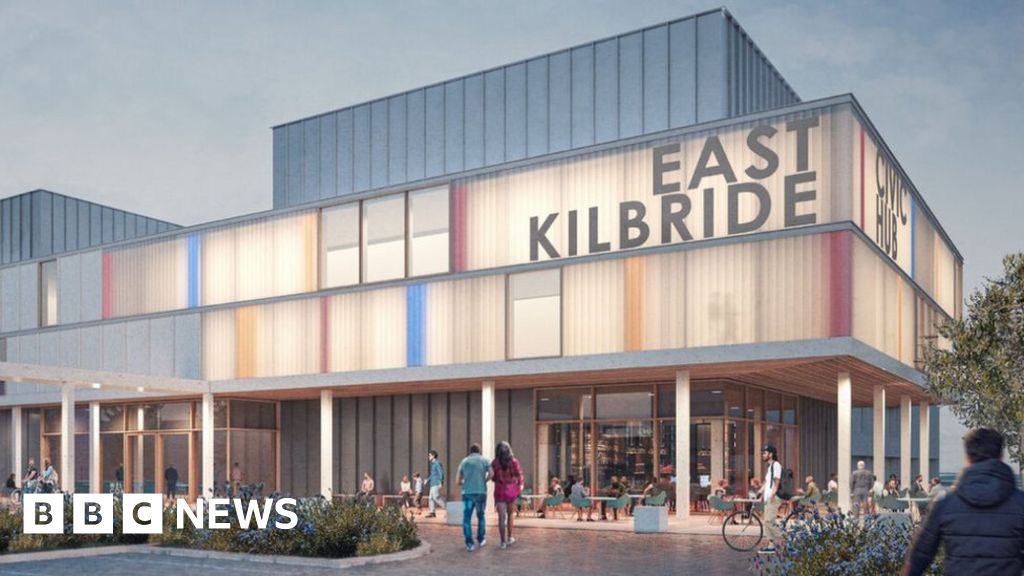Shopping
Plans to demolish a third of town centre revealed – BBC News

Image source, Threesixty Architecture
Proposals to demolish more than a third of East Kilbride’s town centre to make way for homes and open air public spaces have been revealed.
South Lanarkshire Council has launched a public consultation on the plans, which would cut retail space by 40%.
Empty department stores would be replaced in an attempt to revitalise an area hit by changes in shopping habits.
The town centre boasts of having Scotland’s biggest undercover shopping space.
However, there are now 75 vacant units and 507,000sq ft of empty floor space in the EK, East Kilbride centre.
East Kilbride was one of five totally new towns built in Scotland in the years after World War Two in an attempt to move people out of the over-populated slum conditions in parts of Glasgow and other cities.
In rethinking how towns looked, the planners put much of the town centre under cover, creating indoor retail and civic space in the heart of the town.
Image source, EK Central Library
Image source, EK, East Kilbride
But in the decades that that have followed, despite redevelopments, many of the units have emptied.
EK was known as East Kilbride Shopping Centre until administrators were appointed last November after the collapse of owner Sapphire.
The administrators from Interpath Advisory have kept the centre open and are now working with the council to develop new plans for the heart of the town.
Retailers whose units are in the areas set for demolition will be offered alternative premises within the shopping centre “where possible”.
Image source, Threesixty Architecture
One of the areas selected for potential demolition is Centre West – a three-level complex built between 1999 and 2001 at a cost of £90m. Despite being the newest part of the town centre it has declined since losing Debenhams, Top Shop, Zara and many more of the big high street names.
That site has now been picked for a new neighbourhood with private and affordable housing.
The new Civic Hub would have a building that could have a range of uses across the public sector, the arts and education – and a civic square as a meeting place and access point for the town centre.
David Booth, executive director of community and enterprise at South Lanarkshire Council, said: “Without strategic intervention the town centre will continue to decline and fall further behind its neighbours. We therefore need to show ambition in order to realise the town’s potential.”
Image source, Threesixty Architecture
The development, which is expected to suit the community for the next 50 years, would happen over several years if it gets approval.
Anthony Hubbert, from Threesixty architects, said that following the original mixed use vision for East Kilbride town centre in 1947, retail had increasingly come to dominate until changing shopping habits, primarily the rise of online shopping together with financial pressures, had led to the decline of in-person shopping.
He said: “Delivering a high-quality urban environment is key. We need to transform the shopping centre from an island in the middle of East Kilbride into the heart of the town by creating a permeable, safe and accessible environment.”
Negotiations are also under way regarding a supermarket taking over a new space at the current Olympia Mall entrance, and a hotel replacing the ageing entrance area near the bus station at Princes Mall. the ice rink and cinema would remain.
Public and stakeholder consultation has begun with drop-ins at a shop in East Kilbride town centre and a project website being launched on 18 September.
Scotland’s New Towns aren’t so new any more – not the one in Edinburgh, which is over 200 years old, but those created between 1947 and 1966 – East Kilbride, Cumbernauld, Irvine, Livingston and Glenrothes.
Now at pensionable age, it’s time for change to give them a new lease of life.
They were designed for what looked like the future back then, of cars, retail and leisure. So they distribute traffic by numerous roundabouts, while homes are separated from the noise by landscaping.
Public transport was less favoured than it is now. As for leisure, the discotheques and sequins have moved on, and Magnum Leisure Centre in Irvine, teenage haunt of Nicola Sturgeon, has long gone.
Where New Towns remain successful is in attracting and retaining new industries, often placed there by foreign companies. Space was plentiful, road transport links were good, and workers were adaptable for new ways of working.
Retail played a vital part at the heart of the new town design. And as retail now changes radically and permanently, the New Towns face both a problem and an opportunity.
The problem is that private companies own much of the public realm at the heart of the New Towns, so local councils need the co-operation of remote investment funds if they are to create new types of town centre that are less commercial.
If they can secure that buy-in – as East Kilbride appears to have done and as Cumbernauld is doing with the administrators of its central shopping centre – that’s where the opportunity arises. Town centre redevelopment can be achieved through one big plan.
By contrast, Glasgow recently announced a plan for its ‘Golden Z’ of retail – Sauchiehall, Buchanan and Argyle streets. To adapt to similar pressures for less retail space, with less commuter footfall due to so many office employees working from home, the council wants to diversity the city centre towards residential units, more hospitality and the night-time economy.
Glasgow City Council owns the public realm of the streets, but few buildings, so it has to work with hundreds of commercial property owners. That makes it more difficult and much slower to redevelop in a coherent way, and to a clear plan.





